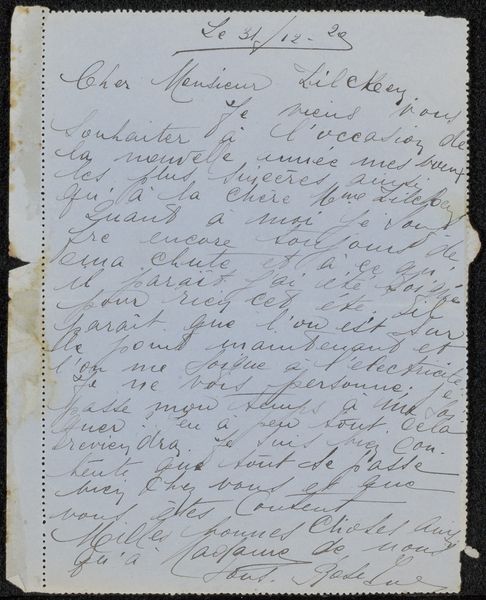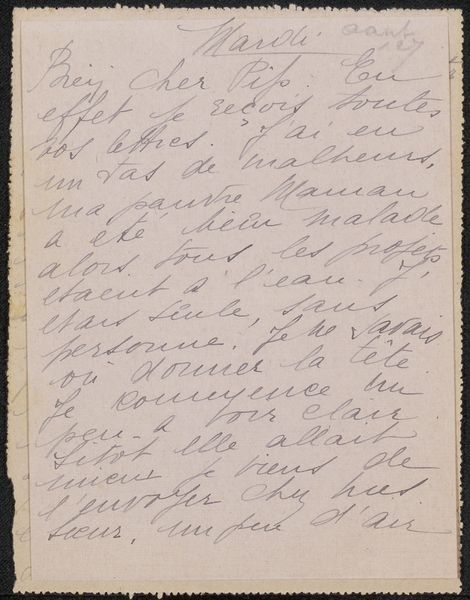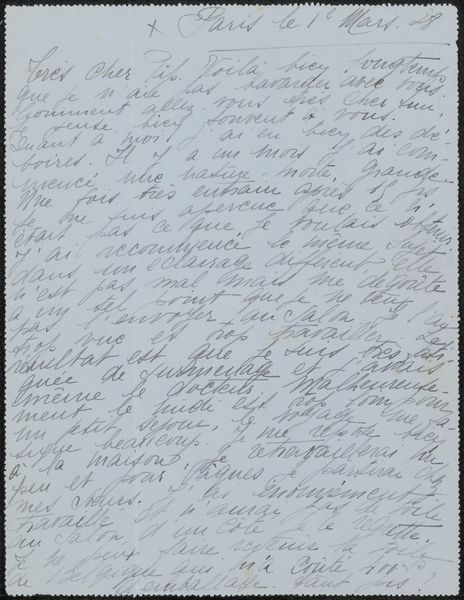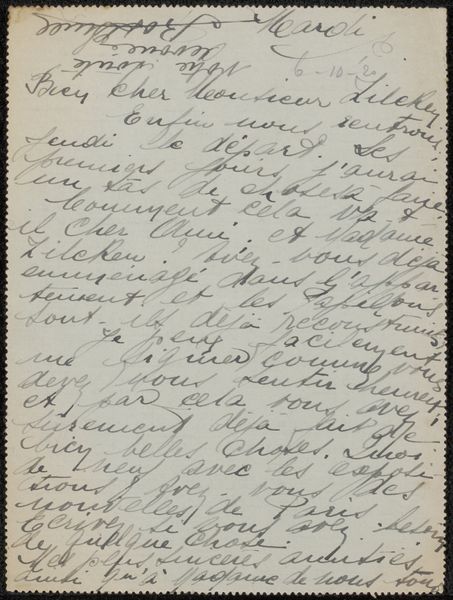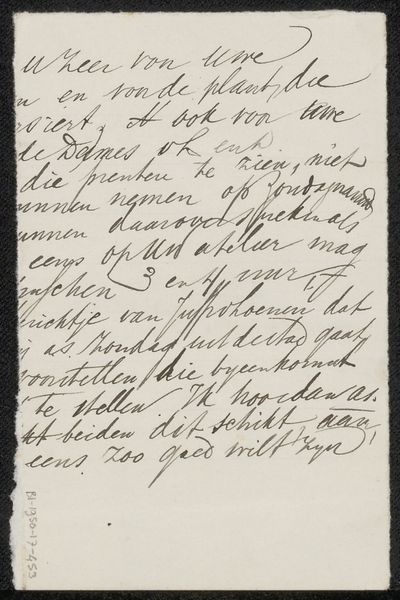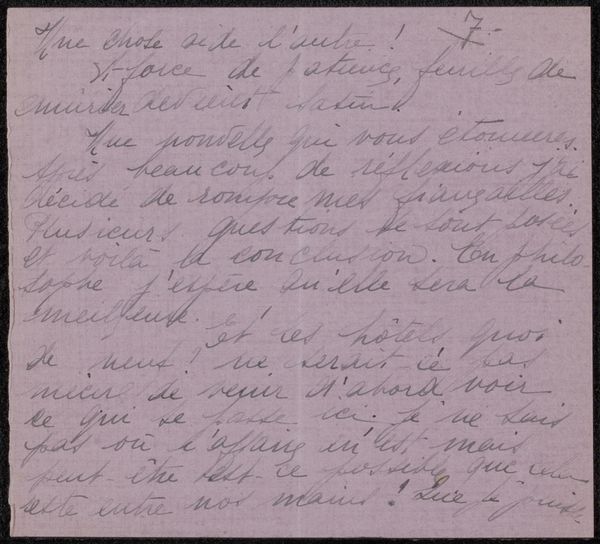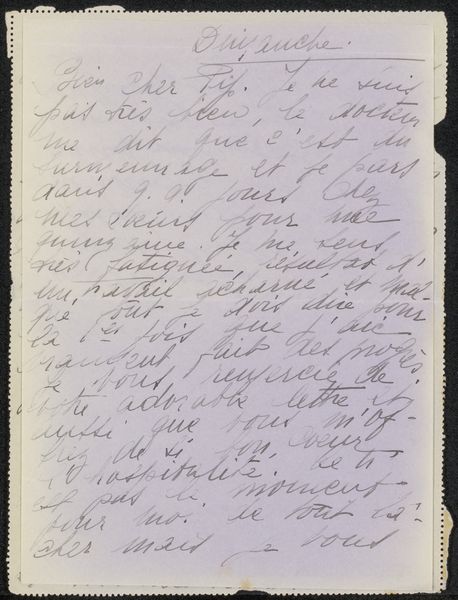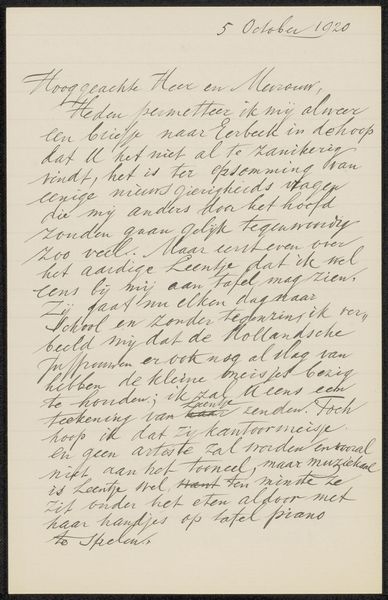
drawing, paper, ink
#
drawing
#
paper
#
ink
#
calligraphy
Copyright: Rijks Museum: Open Domain
Curator: I’m drawn to the intimacy of this piece; it’s so personal. Editor: Indeed. What we're looking at here is titled "Brief aan Philip Zilcken," which translates to "Letter to Philip Zilcken." It's crafted with ink on paper, sometime before 1925, demonstrating the elegance and formality of written correspondence in that era. It is a drawing, demonstrating expert calligraphy. Curator: It reads almost like a fleeting moment captured in ink, perhaps an excerpt from a longer conversation. The handwriting gives it an immediacy, a real sense of the artist's hand and process. I’m wondering what sort of writing instrument was used to make the characters. Editor: The content is just as revealing, socially and emotionally. If my French is correct, the author conveys worry, concern about ill health, perhaps the “neuralgia” of the recipient—but at the same time assures the recipient about his working day; how things have been. Letters such as this connect a wide social net together with their anxieties and everyday lives. The paper itself signifies materiality—does the weave of the material indicate how wealthy was the paper user? Curator: Precisely. I am intrigued by the form it takes and whether the materials involved influence this at all. It does seem the work possesses both a degree of utilitarian value coupled with expressive features beyond sheer script, and so challenges rigid classifications around utility and the fine arts. Editor: The materiality absolutely grounds its meaning. Paper becomes a precious vehicle. But its worth considering—whose stories and correspondence were deemed important enough to preserve, while others were systematically ignored or disappeared, revealing power dynamics through such selection processes. Curator: It offers such a unique window, yes, and to me serves as testament to what an important cultural object something so mundane as a personal letter might represent. Editor: This piece encourages us to reflect not just on aesthetics but to consider the larger socio-political narratives shaping who gets remembered and how labor informs material culture.
Comments
No comments
Be the first to comment and join the conversation on the ultimate creative platform.
